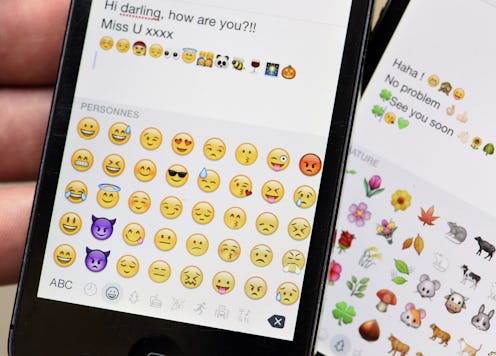It's been a hot minute since the long-awaited update which gave emoji skin tone variations was released for smartphones, providing the diversity that's absolutely necessary in the emoji world. And our emoji may be getting another milestone update in the near future. A proposal submitted to Unicode requests changeable hair, gender, and more for emoji to replace the fixed standard. The change, dubbed UTS 52, would make history as one of the most significant updates to ever hit the cutesy icons.
Emoji may seem like a trivial topic, but these tiny icons have become emblematic of the way we communicate with each other. Emoji usage has become so ubiquitous, in fact, that some linguists predict that emoji could develop into a language entirely unto itself, a systematic visual vocabulary in which syntax and structure are lacking but intention is relatively universal. Which is precisely why this proposal, submitted by Google engineer and Unicode president Mark Davis, is so important. In the greater narrative of language evolution, we should all be able to express ourselves in a way that accurately reflects our individuality. The ability to customize emoji even further than what's currently available ensures more people have emoji that look like them.
Not to mention how it makes for more accurate storytelling. To borrow an example from the Unicode proposal, let's say you're trying to describe a particular storyline from the Game of Thrones (who doesn't emoji the heck out of those convos?) in which "the princess stabbed the prince." The new, changeable emoji would allow for the direction of the sword emoji to be swapped — pointing the business end toward the prince, implying he is the stabbee, not the stabber. A small, nearly imperceptible shift, yes, but one that would make a world of difference in the context of this string of emoji.
And can we just take a minute to give Mr. Mark Davis all the applause for the potential this update has for gender equity? Any woman who speaks emoji (which, at this point, is basically all of us) is O-V-E-R using male emoji to represent ourselves, for lack of other options — unless we need to signify that we've been wearing bunny ears, flamenco dancing, getting our hair done, or walking down the aisle. Given that girls around the world send in excess of one billion emoji a day, it's about time we get some more empowering emoji, or at least are able to transform the existing emoji to express our badass-ery (badass-edness?).
For that matter, it's more than just gender politics being addressed here. Having inclusivity built into common, everyday things like emoji will ultimately further the giant paradigm shift that's required for us to achieve equality of all kinds we have yet to secure. There's gender, yes, but also LGBTQA+ rights, racial equality, and much, much more. Are emoji small potatoes compared to what's happening on these fronts in the world at large? I mean, sure — we're talking about tiny icons here. But in the immortal words of Lao Tzu, "A journey of a thousand miles must begin with a single step." The fact that this step normalizes diversity in a way that nearly everyone can relate to (and which will potentially steer the conversation for the next generation) makes it a pretty great place to start.
Images: Unicode Consortium; Giphy
